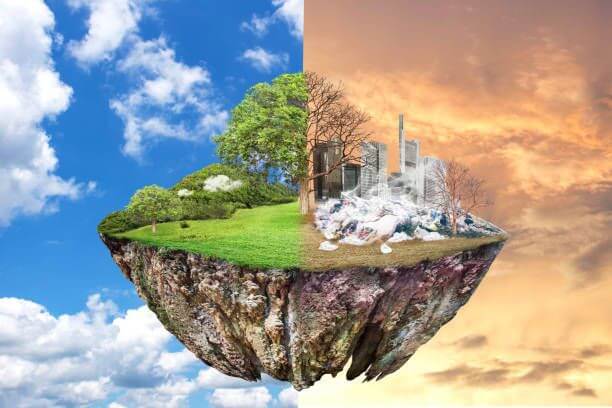The buzzword on everyone's lips these days is "climate change". The buzzword should actually be "save soil". Why is this?
Most people think that soil is an inert substance, which some refer to as "dirt". We ply it with fertilisers and pesticides, and expect that it's going to be around forever, like it's always been, right? Wrong. According to the UN food and Agricultural Organisation (UNFAO), all of the world's topsoil could be gone within 45 to 60 years. By 2045, we could have a population of 9.2 billion people, with less food than what we currently produce. Soil is the basis of all creation, a fact which our forefathers across a variety of cultures and religions knew very well. but which modern society in general, has sadly forgotten. For example, "Adam" is a Hebrew word for "man" and comes from "adama", the Hebrew word for "earth". "Eve", on the other hand, is derived from the word "life" according to the Academy of the Hebrew Language. In Hinduism, Dharti Maata is the supreme mother and goddess of the Earth. In worshipping Dharti Maata, Hindus would be worshipping and protecting all aspects of nature.
Our relationship with nature and the soil has unfortunately led us to what is now a soil crisis, where 52% of agricultural soils globally are degraded. In productive agricultural soil, the minimum organic content should be between 3-6%, but in large parts of the world, it is below 1% which is the threshold for desertification. In Africa, the average organic content of soil is 0.5%. The UN agencies are saying that the planet may have agricultural soil only for another 80-100 crops. if that happens, there will be a food crisis on the planet, leading to increased famine, violence and civil strife.
How does soil become desertified? Simply put, if organic matter is removed from soil, it is desertified and becomes sand. However if we add organic content to sand, it becomes soil. Soil is becoming desertified largely through intensive agricultural practices and other practices such as largescale deforestation. Since the dawn of agriculture, more CO2 has been released from soil and the clearing of forests for farms than from all the world's industries in the last 250 years (UN Environment, 2019). According to the FAO (2015), 12 million hectares of topsoil are lost every year across the world.
In South Africa, we have been experiencing the effects of climate change, through floods, veld fires and droughts. The relationship between soil desertification and climate change is a significant one. Soil and vegetation have the potential to absorb and reduce CO2 in the atmosphere to the level it was before the Industrial Era began in 1850, therefore reducing global warming and the effects of climate change. An increase of just 0.4% a year in soil organic carbon can reduce the risk for farmers from natural disasters like floods, droughts and storms (IUCN, 2020), whereas regenerative agriculture can add $70 billion to the economics of sub-Saharan Africa by 2040 (Africa Regenerative Agriculture Study Group, 2021). Soil desertification has also resulted in a decrease in the nutritional value of food. A University of Texas study on nutrients in fruits and vegetables in US found declines in the amount of protein, calcium, phosphorus, iron, riboflavin (vitamin B2) and vitamin C over the past half century due to soil depletion (Scientific American, 2011).
In order to stimulate action to curb the implementing disaster posed by soil degradation, 65-year old spiritual leader and yogi, Sadhguru, embarked on a lone motorcycle journey of 30 000 km from London to India, creating awareness on soil desertification amongst the public and engaging with policy makers in 27 nations over 100 days. The objectives of the Save Soil movement is to create public awareness of the soil crisis so that the public can encourage government leaders of 196 nations to develop and implement policies to increase the soil organic content to the minimum levels of 3-6%.
During this journey, Sadhguru took a detour to Cote d'Ivoire to attend the 15th session (COP15) of the UN Convention to Combat Desertification, where he advocated for a three pronged solution. Firstly, for government to educate farmers about soil desertification and the need to increase the organic content of soil crop rotation and permaculture. Secondly, fir government for facilitate simple carbon credit incentives for farmers to achieve the minimum 3-6% organic content within a defined timeframe (together with appropriate disincentives). And thirdly, for markets to develop a mark of superior quality for food grown from soil that have the target of at least 3-6% soil organic content.
Sadhguru also attended the World Economic Forum in Davos on May 24, where he appealed to representatives from more than 150 countries, to generate soil health, thus making it financially feasible for farmers to continue to farm their lands in the interest of food security, to reduce migratory exodus into cities and to ensure long-term planetary wellbeing. The Save Soil movement has been highly successful so far, with over 2 billion people reached and 74 nations signing memoranda of understanding with Save Soil to implement policies to address soil desertification.

